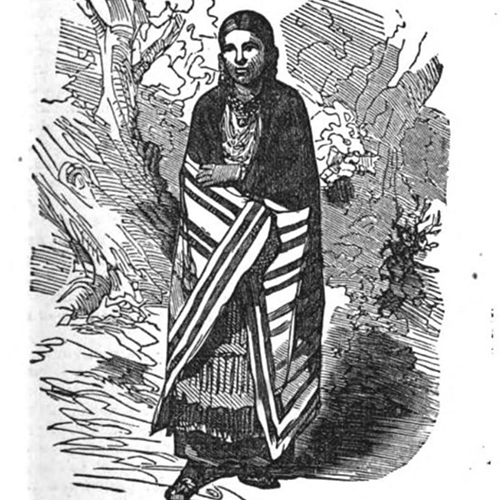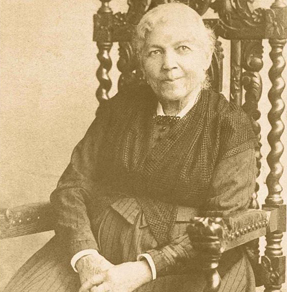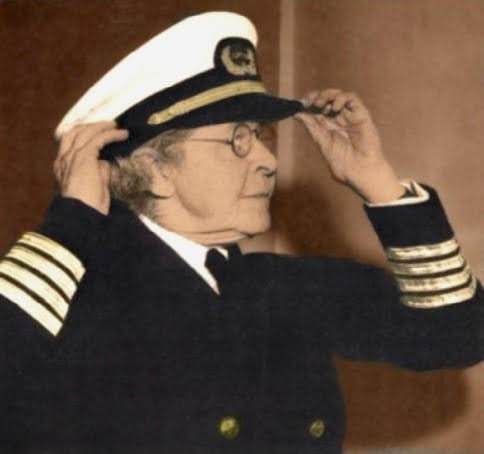Considered the matriarch of New Bedford’s working waterfront, Harriet Didriksen (1943-2019) advocated for fishermen, their families and the fishing industry. A boat owner as well as owner/operator of New Bedford Ship Supply, Harriet was armed with a lifetime of fishing knowledge in her fight against unreasonable regulation. Backed by research, Harriet worked with politicians in convincing regulators to open closed fishing areas.
Considered the matriarch of New Bedford’s working waterfront, Harriet Didriksen (1943-2019) advocated for fishermen, their families and the fishing industry. A boat owner as well as owner/operator of a ship chandlery, Harriet was armed with a lifetime of fishing knowledge in her fight against unreasonable regulation.
Daughter of Norwegian immigrant fisherman Johan Johannessen and Dorothy Ellis Johannessen, Harriet Ane Johannessen married Norwegian fisherman Didrik Didriksen. Harriet and Didrik owned boats that fished in the same way as their ancestors, by holding multipurpose licenses to allow them to move from one species to another. Since the age of 13, Harriet worked at New Bedford Ship Supply, founded in 1935 by her uncle Rasmus Tonnessen. In 2000, Harriet inherited New Bedford Ship Supply and became its president. For over 80 years, New Bedford Ship Supply has outfitted fishing vessels from New Bedford and all along the seaboard, north to Boston and south to Point Judith, Rhode Island, with groceries, equipment and other supplies.
In 1996, in response to increased fishing by more boats, the Magnuson-Stevens Fishery Conservation and Management Act, known as the Sustainable Fisheries Act (SFA), required that stocks of each species be built up within a certain time to a level set by the National Marine Fisheries Service. Amendments limited the number of vessels fishing for groundfish, reduced days at sea, limited the catch per trip, increased mesh size, and closed areas on Georges Bank. Skeptical of the National Marine Fisheries Service numbers, Harriet regularly attended meetings from Connecticut to Maine of the New England Fisheries Management Council, whose role was to make recommendations for fisheries management. She supported the research of the School for Marine Science & Technology (SMAST) at the University of Massachusetts Dartmouth that challenged traditional ideas by looking at marine resources in new ways. SMAST Professor Kevin Stokesbury, developer of an underwater camera that accurately captures scallop populations, stated, “We were going up against some pretty powerful people and some pretty preconceived notions to look at the scallop resource in a new way that wasn’t really accepted by everyone, but Harriet got it right away and really supported us with it.” Backed by SMAST research, Harriet worked with Congressman Barney Frank and Senator Ted Kennedy to convince regulators to open areas that had been closed. She was also a member of the Fisheries Survival Fund Board, New Bedford Port Authority Fisherman’s Advisory Council, SMAST Steering Committee, Commercial Fisheries NOAA Roundtable and the Joint VMS/Enforcement Committee & Advisory Board.
As the owner of New Bedford Ship Supply, Harriet often forgave individual debts so that fishing families could survive. She donated supplies and food for SMAST research trips, spoke to students and encouraged women to enter the fishing industry. Harriet and Didrik owned the F/V Pioneer, the F/V Settler and the F/V Bagatell, now an educational vessel at Stony Brook University. For her years of service in support of New England fishing communities, Mayor Scott Lang awarded Harriet with the Mayor’s Professional Mariners Award. Founding Dean of SMAST Brian Rothschild predicts, “Fifty years from now, they’ll say New Bedford was the No. 1 port in the United States for how many ever years it is, and that was because of Harriet Didriksen.”
Ann O’Leary
Information from
- Bonner, Michael. “She Won’t Be Replaced: Harriet Didriksen Remembered as a Fishing Icon.” SouthCoast Today, 8 Feb. 2019, https://www.southcoasttoday.com/news/20190208/she-wont-be-replaced-harriet-didriksen-remembered-as-fishing-icon.
- “Harriet Didriksen.” Center for Sustainable Fisheries, CSF, http://centerforsustainablefisheries.org/board-of-directors/harriet-didriksen/.
- “Harriet Didriksen Honored, Marty Manley and Howard Nickerson Receive Awards Posthumously.” Saving Seafood, 2019, https://www.savingseafood.org/other-news/harriet-didriksen-honored-marty-manley-and-howard-nickerson-receive-awards-posthumously/.
- Playfair, Susan R. Vanishing Species: Saving the Fish, Sacrificing the Fisherman. University Press of New England, 2003.
![[Harriet Didriksen], c. 21st century, Photograph, Courtesy of The Standard-Times Photo of Harriet Didriksen](https://historicwomensouthcoast.org/wp-content/uploads/2019/10/Harriet-Didriksen_web-635x635.jpg)




